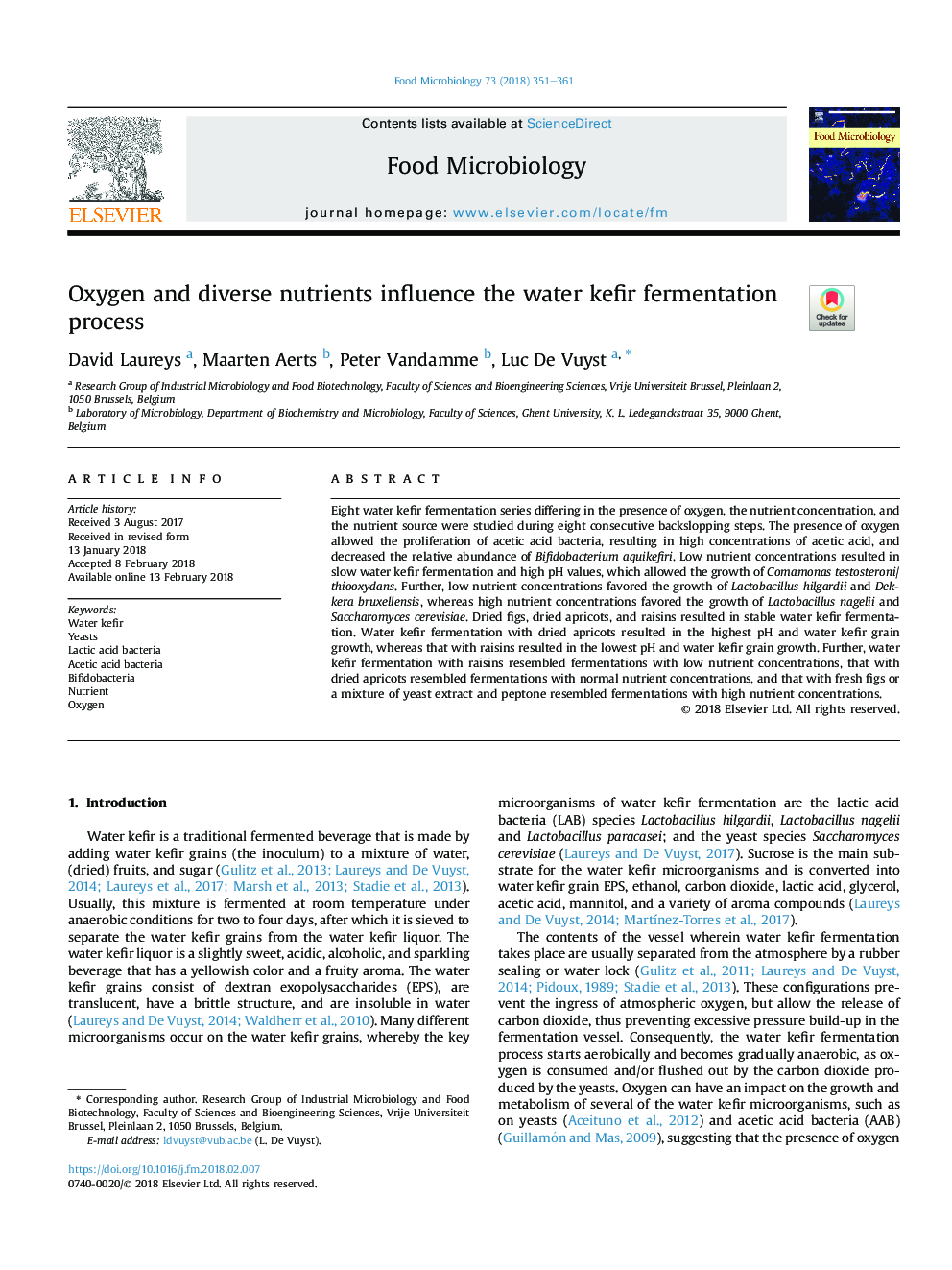| Article ID | Journal | Published Year | Pages | File Type |
|---|---|---|---|---|
| 8843552 | Food Microbiology | 2018 | 11 Pages |
Abstract
Eight water kefir fermentation series differing in the presence of oxygen, the nutrient concentration, and the nutrient source were studied during eight consecutive backslopping steps. The presence of oxygen allowed the proliferation of acetic acid bacteria, resulting in high concentrations of acetic acid, and decreased the relative abundance of Bifidobacterium aquikefiri. Low nutrient concentrations resulted in slow water kefir fermentation and high pH values, which allowed the growth of Comamonas testosteroni/thiooxydans. Further, low nutrient concentrations favored the growth of Lactobacillus hilgardii and Dekkera bruxellensis, whereas high nutrient concentrations favored the growth of Lactobacillus nagelii and Saccharomyces cerevisiae. Dried figs, dried apricots, and raisins resulted in stable water kefir fermentation. Water kefir fermentation with dried apricots resulted in the highest pH and water kefir grain growth, whereas that with raisins resulted in the lowest pH and water kefir grain growth. Further, water kefir fermentation with raisins resembled fermentations with low nutrient concentrations, that with dried apricots resembled fermentations with normal nutrient concentrations, and that with fresh figs or a mixture of yeast extract and peptone resembled fermentations with high nutrient concentrations.
Related Topics
Life Sciences
Agricultural and Biological Sciences
Food Science
Authors
David Laureys, Maarten Aerts, Peter Vandamme, Luc De Vuyst,
